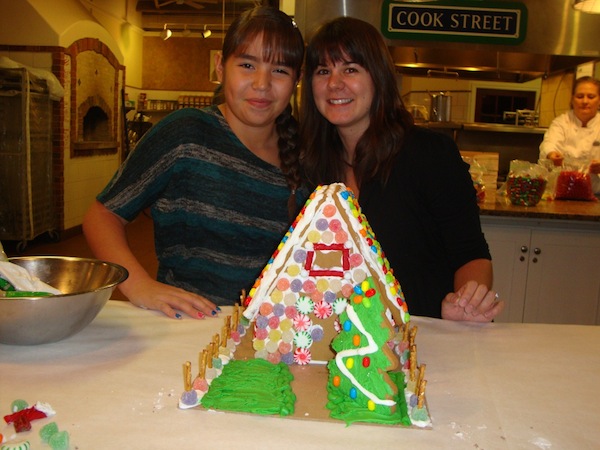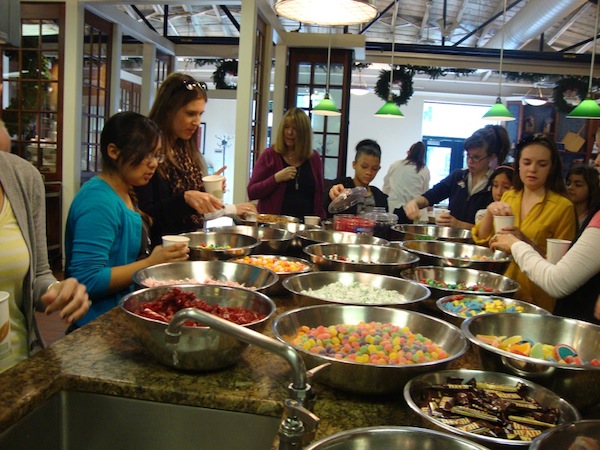The Local newsletter is your free, daily guide to life in Colorado. For locals, by locals. Sign up today!
I recall making and decorating gingerbread houses—the graham cracker kind—years ago when I was a young girl. The structures, made of four cookie walls and a cookie roof, were held together with sticky white icing. These concoctions were more akin to shanties than fairy-tale abodes, but that was OK because they were easy to assemble, and after we were done, we would just as quickly devour them.
I hadn’t thought about those projects in decades. But a few years ago my then-preschooler Ella brought a candy-crusted edifice home from school. We placed her graham cracker creation in the middle of the dining room—a position of honor. I hadn’t yet gotten out the Christmas decorations, and she delighted in the fact that her gingerbread house was the sole symbol of the coming holiday. Ella’s excitement was so contagious that I signed us up for a gingerbread class at Cook Street School of Culinary Arts in LoDo.
A couple of weeks later, we arrived to discover 24 gingerbread houses—each 12 inches high and 10 inches wide, with front and side yards—lined up on Cook Street’s demonstration counters. Each workstation included a pastry bag of white icing, a metal bowl, and a small spreading spatula. The focal point of the room was an island bedecked with metal bowls overflowing with a rainbow of M&Ms, Red Vines, Necco wafers, gum drops, Heath Bars, sour balls, mini candy canes, SweeTarts, sugared jellies, and more. Ella was absolutely riveted.
We put on our aprons, loaded up a bowl of sweets, and got to work. I piped the icing while Ella took turns eating and decorating. I sipped wine and watched her delight in the process. We took notes from the class veterans: not too much icing, lest it slide off the roof; broken Necco candies make colorful “flagstone” patios; use pretzels to create a railing for the front step. As the house became more and more ours, we chatted about school, Santa, and my holiday traditions as a child. This, we decided together, should be one of our annual customs.
And so, for the fourth year in a row, we’ll spend a December afternoon talking, consuming too many sweets, and decorating our way to a sugared masterpiece. When we get the gingerbread palace home, it’ll go on display for all to see—right in the middle of the dining room table. And only then will it feel like Christmas.
5280.com Exclusive: View a slideshow of the Cook Street School of Culinary Arts here.
Each December, Cook Street School of Culinary Arts continues the tradition of holiday gingerbread houses. A look at what all that decorating means:
——Images courtesy of Cook Street School of Culinary Arts











